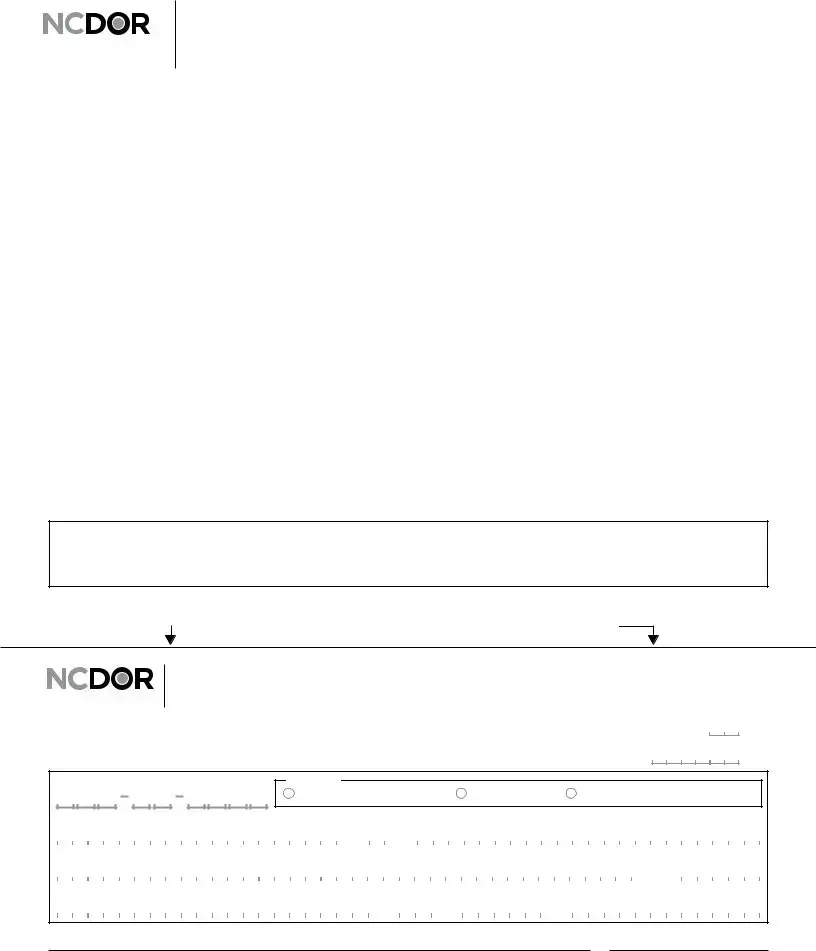The IRS Form W-4 is similar to the NC-4 form in that both are used to determine how much federal or state income tax should be withheld from an employee's paycheck. The W-4 allows employees to claim allowances based on their personal circumstances, such as marital status and dependents. Like the NC-4, if an employee does not submit a W-4, the employer will withhold taxes at the highest rate, which may not reflect the employee's actual tax liability.
The Form I-9 is another document that shares similarities with the NC-4. While the NC-4 is focused on tax withholding, the I-9 is used to verify an employee's identity and eligibility to work in the United States. Both forms must be completed by the employee and submitted to the employer. Employers are required to keep the I-9 on file, similar to how they must maintain the NC-4 for tax purposes.
The NC-4 EZ form serves a specific purpose similar to the NC-4. It is a simplified version designed for individuals who claim only the North Carolina Standard Deduction or the Child Deduction Amount without any additional deductions or credits. This makes it easier for qualifying employees to complete their withholding certificate, just as the NC-4 aims to simplify the tax withholding process for employees.
In the realm of vehicle transactions, understanding the documentation involved is essential, particularly when it comes to ownership transfer. One important document to consider is the South Carolina Motor Vehicle Bill of Sale. This form not only solidifies the sale between buyer and seller but also ensures a smooth registration process thereafter. For more details on this vital form, you can visit https://autobillofsaleform.com/south-carolina-motor-vehicle-bill-of-sale-form/.
The NC-4 NRA form is tailored for nonresident aliens, similar to how the NC-4 serves residents. This form allows nonresident aliens to indicate their tax withholding allowances, reflecting their unique tax situation. Both forms require the employee to provide specific information to ensure the correct amount of tax is withheld, accommodating different tax statuses.
The IRS Form 1040 is another important document that relates to the NC-4. While the NC-4 is used for withholding purposes, the Form 1040 is the annual tax return where individuals report their income and calculate their tax liability. The information provided on the NC-4 can affect the overall tax situation reported on the 1040, making it crucial for taxpayers to understand both forms.
The NC-40 form is used for estimated tax payments and is relevant for individuals who may not have enough tax withheld during the year. Similar to the NC-4, it helps individuals manage their tax obligations. If a taxpayer expects to owe a significant amount of tax, they can use the NC-40 to make estimated payments, ensuring they meet their tax responsibilities throughout the year.
The IRS Schedule C is used by self-employed individuals to report income and expenses from their business. Like the NC-4, it helps determine tax obligations. While the NC-4 focuses on withholding allowances for employees, Schedule C allows self-employed individuals to calculate their net profit or loss, which ultimately affects their tax situation.
The Form 1099 is issued to independent contractors and freelancers, similar to how the NC-4 is used for employees. While the NC-4 determines withholding for employees, the 1099 reports income received by non-employees. Both forms are essential for accurately reporting income and calculating tax liabilities, but they apply to different employment situations.
The IRS Form 8862 is used to claim the Earned Income Tax Credit (EITC) after a disallowance. It is somewhat similar to the NC-4 in that both forms deal with tax benefits. While the NC-4 determines withholding allowances, the 8862 is used to ensure that taxpayers can still claim certain credits after previously being denied, thus impacting their overall tax situation.
Lastly, the IRS Form 941 is used by employers to report payroll taxes. It is related to the NC-4 as both forms deal with employee wages and tax withholding. The 941 summarizes the total wages paid and taxes withheld, while the NC-4 focuses on individual employee withholding allowances, ensuring that both the employer and employee fulfill their tax obligations.


 ®
® ,
, 
 Cut here and give this certificate to your employer. Keep the top portion for your records.
Cut here and give this certificate to your employer. Keep the top portion for your records.


